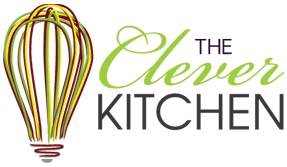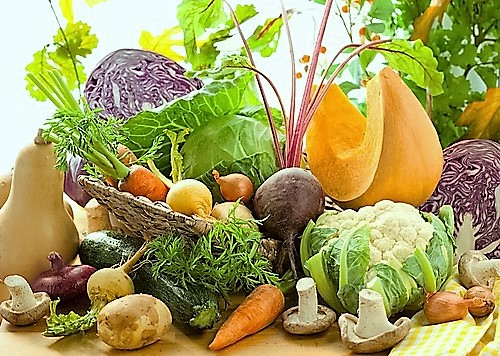The Benefits of a Plant-based Diet
The Benefits of a Plant-based Diet
You’ve heard the term plant-based, but do you know what it really means? Is it synonymous with being a vegan or a vegetarian? Perhaps you imagine a squirrel-like diet in which you subsist on nuts and seeds?
I’m a licensed nutritionist who follows a whole food, plant based diet and I’m here to demystify some common misconceptions and concerns, while hopefully convincing you to lead a more plant-based lifestyle.
What do you eat on a plant-based diet?
A plant-based way of eating focuses on consuming plant-derived whole foods that are unrefined and minimally processed. This means pure, unadulterated ingredients that are as close to their original form as nature intended.
Whole grains (oats, millet, barley, rye, amaranth, quinoa), fruits, vegetables, nuts, seeds, tubers (sweet potatoes, carrots, radishes, beets and potatoes), and legumes (beans, lentils and chick peas) are the dietary staples. These are full of vitamins, minerals, antioxidants, and phytochemicals and provide an abundance of nutrients for your body.
Despite what you might have heard, following a plant-based lifestyle doesn’t necessarily mean fully avoiding animal products like a vegan or vegetarian. It is not an all-or-nothing program. Animal proteins can fit into the plant based eating lifestyle, yet they serve as more of a supporting role to your veggies and whole grains.
Vegan versus plant-based
Technically, a vegan doesn’t consume any animal products that involve the exploitation of animals -including meat, eggs, milk, dairy, and honey. For many, the primary reason for leading a vegan lifestyle is related to ethics and animal welfare. However, a vegan diet is not always as nutritious or virtuous as a diet based on unprocessed plant-based whole foods. Think of “fake” sausages and greasy fries.
One of the biggest concerns clients have when contemplating a plant-based lifestyle is whether eating in this manner is balanced and nutritionally sound. I reassure them that it most certainly is!
But you need to be knowledgeable about the foods that you’re eating. A healthy, plant-based diet requires planning and discipline. It’s essential to make sure that you are consuming a fresh, colourful and diverse diet in order to optimize your nutrition.
But where do I get my protein?
Protein is important for growth and repair, our immune health, our skin and brain function. But problems arise when people get a disproportionate amount of their protein from animals. Whatever your personal views on including meat as part of your regular diet, there is no denying that meat consumption is causing major environmental, health and humanitarian problems. If we truly care about our planet and our health we need to start embracing sustainable alternatives – and that’s where plants come in.
“Am I getting enough high quality protein?” It’s a common concern for people considering a plant-based way of life. And while protein needs differ depending on your age, health status and physical activity, satisfying all your protein needs from a plant-based diet is simple and achievable. Beans, nuts, seeds, and whole grains are all plant-based sources of protein that are also filled with vitamins, minerals, and fibre.
The health benefits
One of the best reasons to start following a plant-based diet is for the health benefits. It can also help you lose weight and keep it off. This is because a plant-based lifestyle consists of foods that are full of fibre and have a high water content, which promotes feelings of fullness.
Research also shows that a plant-based diet helps balance your blood sugar levels. This means a lower risk of insulin resistance and diabetes-related medical conditions.
Your digestion will benefit too, as a fibre-rich plant-based diet helps move things along, preventing constipation, and promoting regular bowel movements. It also provides nourishment for the healthy bacteria that live in your gut – which helps strengthen your immune system and much more.
Better skin
Another major reason to jump on the plant-based eating train is for the external benefits. Plant-based foods are loaded with healthy fats, vitamins, minerals, and phytochemicals, which improve skin clarity and help you get that healthy glow.
Most fruits and vegetables are loaded with vitamin C, a powerful antioxidant – especially broccoli, papaya, apricot, and bell peppers. They assist in stimulating collagen production, smoothing lines, and reducing wrinkles.
More energy
Feeling more energized and alert is another benefit of following a plant-based diet. Our modern-day diet is filled with processed foods, sugar, and white flour, which de-energize your system and make you fatigued. These foods cause spikes and rapid declines in sugar levels, which can result in spurts of energy followed by extreme tiredness.
Whole foods, whether complex carbohydrates from grains, healthy fats from nuts, seeds and avocado or non-sweet fruits like berries, apples and kiwis, sustain your energy more naturally. High fibre foods result in a gradual and steady rise and fall in blood sugar levels, so you avoid the sugar rush and the crash.
Set the plant-based intention
Transitioning away from processed and animal based foods to a more plant-based way of life will help your body function at optimal level and improve your overall health. You can expect your digestion to improve, your skin to start glowing, and your total energy to increase due to the nutrient-dense characteristics and high quality of the foods you’re eating – and you’ll be doing something positive for the environment too- see this post for more details on why a plant-based diet can help the environment.
Here’s some inspiration for a popular family meal – loaded with complex carbs, healthy fats and plant protein. It’s a favourite at my house!
Clever Vegetarian Chili
Ingredients
- 3 tablespoons olive oil or coconut oil
- 1 medium yellow onion, chopped
- 1 large carrot, chopped
- 1 stalk celery, chopped
- 1 medium green bell pepper, cored, seeded and chopped
- 1 medium red bell pepper, cored, seeded and chopped
- 3 cloves garlic, finely chopped
- 1 tablespoon dried oregano
- 2 teaspoons ground cumin
- 1 tablespoon chili powder
- 1 tablespoon ground coriander seeds
- 1 1/2 teaspoons salt
- 1 can diced tomatoes, with their liquid (or equivalent fresh if you have on hand)
- 1 cup green or coral lentils (or brown or whatever you have around)
- 3 cups cooked red kidney beans, drained (or the equivalent dried and soaked overnight)
- 1 1/2 cups cooked black beans, drained (optional)
Heat the oil in a large pot over medium heat.
Add onions, carrots, celery, peppers and garlic and cook for 10 to 12 minutes, until vegetables are softened but not browned.
Add lentils, beans, oregano, cumin, chili powder and salt. Stir to blend. Add tomatoes and 8 cups water.
Gently simmer over low heat, uncovered, for 45 minutes. Add more water if necessary and simmer an additional 30 minutes. Add more water if your chili becomes dry. Garnish individual bowls with green or red onions, chili peppers or plain yogurt, if desired.
For a completely balanced meal, eat with rice, quinoa, tacos or any other favourite whole grains.
(about 230 calories per serving)
NOTE: If you prefer, substitute 1 packet of Old El Paso Taco seasoning in place of spices and salt.


No Comment